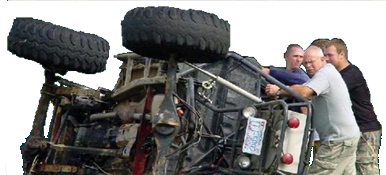RatLabGuy
You look like a monkey and smell like one too
- Joined
- May 18, 2005
- Location
- Churchville, MD
I know this has been discussed before, I was just thinking about it as I was prepping to re-shim my rear axle perches.
We've all heard the DON'T of using cynderblocks etc for jackstands.
But sometimes you need pretty high stands - like at the moment I have to support it by the frame so the leaf spring can have full droop. I have the 6-ton stands that are like 28" tall but even that isn't enough.
Given that even taller stands aren't easy to find (even 12 tons are only a few inches taller), What's the best way to safely add height?
I'd thought about maybe stacking scrap peices of 2" sq tubing between the top of the stand and frame (sideways parallel to frame) but that seems like it could slide off.
I've used wood blocks before (against grain), but not happy w/ that either.
We've all heard the DON'T of using cynderblocks etc for jackstands.
But sometimes you need pretty high stands - like at the moment I have to support it by the frame so the leaf spring can have full droop. I have the 6-ton stands that are like 28" tall but even that isn't enough.
Given that even taller stands aren't easy to find (even 12 tons are only a few inches taller), What's the best way to safely add height?
I'd thought about maybe stacking scrap peices of 2" sq tubing between the top of the stand and frame (sideways parallel to frame) but that seems like it could slide off.
I've used wood blocks before (against grain), but not happy w/ that either.



